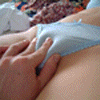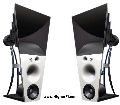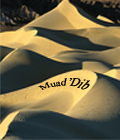 Stereo Seperation on Drums? Stereo Seperation on Drums? |
Sephiroth 
Master Producer
   

Registration Date: 11-04-2006
Posts: 741
Helpfulness rating:
 |
|
What sort of stereo panning/ seperation to people use on drums, i used to try and keep the kick/ snare dead centered and widen percussive elements, but using a small amount of stereo seperation on my drum master channel seems to breathe more life into the drums as a whole...do other people use this on all their drums or certain elements?
__
Sephiroth Soundcloud: http://soundcloud.com/sephiroth_rees
Sephiroth Myspace: http://www.myspace.com/sephirothdnb
C-Sonix Soundcloud: http://soundcloud.com/c-sonix
C-Sonix Myspace: http://www.myspace.com/csonix
|
|
|
19-11-2009 15:44 |

|
|
Puzzle 
..zebra?
   

Registration Date: 27-05-2008
Posts: 724
Helpfulness rating:
 |
|
I keep my snare and kick centered but my "background" breaks and hihats are almost always in stereo.
__
SoundCloud
Facebook
YouTube
|
|
|
19-11-2009 16:12 |

|
|
demure 
mastication fo de nation
   

Registration Date: 22-01-2009
Posts: 921
Helpfulness rating:
 |
|
i have never used panning on drums, could be why i struggle sometimes to get a good drumsound, but i like everything in the middle 
|
|
|
19-11-2009 16:42 |
|
|
D2o 
Ghost
   

Registration Date: 30-05-2005
Posts: 2,545
Helpfulness rating:
 |
|
I general do quite a few things to get more stereo into my drums.
Here's a few techniques I use on various elements
1. Kicks
People generally say to keep these dead centre and in most part, i agree. But to get a bit of width to them I use reverb.
Now some will say that wrongon kicks but used sparingly and properly it can add some life to it.
The sort of reverbs you are looking for a very short plate/room verbs. I'm talking real short here, less than a second. Take out the low end to anywhere around 350Hz+. and maybe add some damping if the verb has that control or just use eq to roll off the highs.
Then blend to taste. If done well it should sound like the kick samples themselves have width and not that they have verb on them.
2. Snares
Like kicks, I love it when snares have some stereo to them. Makes them feel more involving and that it almost wraps around your head lol
I make sure that the main layers are centred, the ones that hold most of the character and weight. Then i layer in 2 lighter snares that are quite similar tonally and pan them either side to taste.
I route these snares to a channel of their own so i can see the level meter and make sure that they are hitting roughly the same level. Then you can blend this channel over your main centred snare to desired level.
Again I add reverb much like on the kick. Sometimes copying the reverb from the kick can help them both sit together nicely and sound more coherent. Of course it might not fit straight away so have a little play with settings here to blend it better
With the reverb on kick and snare, If its done well it sounds like part of the samples rather than reverb slapped on-top.
Other ways to use reverb is to gate the reverb. First thing here you might think of Phil Collins but trust me, it works well.
Also I find compressing each after verb is added helps them gel better.
3. Breaks.
To give these some more life I like to pan the hi-hats and ghost snares a little. Then mirror that panning on and other break(s) you might have.
For instance i generally use 2 breaks that have good hat/ghosts in them.
So what I do is on break 1, I pan the hats left and ghost hits right,
then on break 2 i do the opposite. This makes the hats and ghosts on the breaks feel wider.
Plus you can pan different hi hats/ghost snares in the break differing amounts for a bit of variation/ear candy 
i.e Each break might have 3 hats so pan them all in the same direction just to different amounts.
4. layered Hats/rides.
For layered hats i just generally knock each hat sample out a touch to taste really. simples
Rides are good for width too as a lot of sampled rides i seem to find are stereo to start with so that helps. Some times though I'll layer in a new ride sound and use a unison on it to give with, Yeah when solo'd it sounds a bit whack but its all about the bigger picture and if blended in low level it can sound sweet.
5. Finishing touches.
This is mostly about reverbs i have set up on a send so i can give the whole beat a sense of space and width
Here i'll have 2 or 3 set up each with different characters.
this is 3 of the types I use most, of course it changes from tune2tune but they are based around these:
A dampened plate( plate with top end rolled off).
A light damped hall ( top end off but the lows off lots too.
The what I like to call a fizzy plate (this is a plate verb with loads of low end out so its just the real highs left.)
I generally dont add these till the tune starts taking shape, no point I feel as you dont know if they are adding or taking away from the mix.
So loads of things really. Of course dont take what i say as gospel. try things out for yourself. Take what i've said and fuck about. I'm sure you'll come across happy accidents 
Right, thats enough my hands are hurting lol
__
WWW.SOUNDCLOUD.COM/VOLATILE-PSYCLE
|
|
|
19-11-2009 17:35 |

|
|
Gregg 
Wicked Producer
  

Registration Date: 16-05-2007
Posts: 417
Helpfulness rating:
 |
|
For percussive elements:
1. subtle panning: Because strong panning on rhythmical components is very annoying and because your mix should always be mono compatible (sound good in club as on headphone).
2. balanced panning: if you pan one shaker slightly to the left you should have another one being panned slightly to the right. This will make your drums sound wider and it delivers the liveliness you described.
Generally:
1. intensify by making up contrasts: you can’t have loud, when there is no quite. A slight panning is much more noticeable and effective when having enough other centred/mono sounds.
2. It’s a good idea to check a phase meter to guarantee your mix still has mono compatibility.
3. A whole hi passed break may not just be simply panned to one side but you can determine whether it should sound generally wider or more mono by using a multiband stereo widening or imaging plugin. stereo delay that often comes with those plugins can turn totally mono elements into stereo, so definitively worth a try.
4. If you are using a multiband stereo imaging plug, use widening more on the higher bands and keep the lows and low mids mono (a snare therefore can have widening on it, but narrowed on its highs).
5. Panning or widening on single tracks will be more precise and deliver better results than tweaking on the master channel.
Those tips are based on my personal perception about what sounds good and what shit. You may adopt a few but be aware that most of them aren’t really laws to be maintained or whatever.
|
|
|
19-11-2009 18:06 |

|
|
Sephiroth 
Master Producer
   

Registration Date: 11-04-2006
Posts: 741
Helpfulness rating:
 |
|
cheers peps, some great responses there! 
__
Sephiroth Soundcloud: http://soundcloud.com/sephiroth_rees
Sephiroth Myspace: http://www.myspace.com/sephirothdnb
C-Sonix Soundcloud: http://soundcloud.com/c-sonix
C-Sonix Myspace: http://www.myspace.com/csonix
|
|
|
20-11-2009 13:21 |

|
|
Muad'Dib 
Andrejnalin
    

Registration Date: 02-12-2003
Posts: 4,197
Helpfulness rating:
 |
|
I almost always push the hi-hat on stereo (more often than not, on the left side) and sometimes I add delay to it that is panned to the right. It's a great effect to fill your high-end.
__
Thinking about becoming an Image-Line/FL Studio customer? Want a 10% reduction in price? Use this affiliate link:
http://affiliate.image-line.com/BADEBDG473
There is no such thing without its opposite
-Bene Gesserit
|
|
|
20-11-2009 13:24 |

|
|
|
